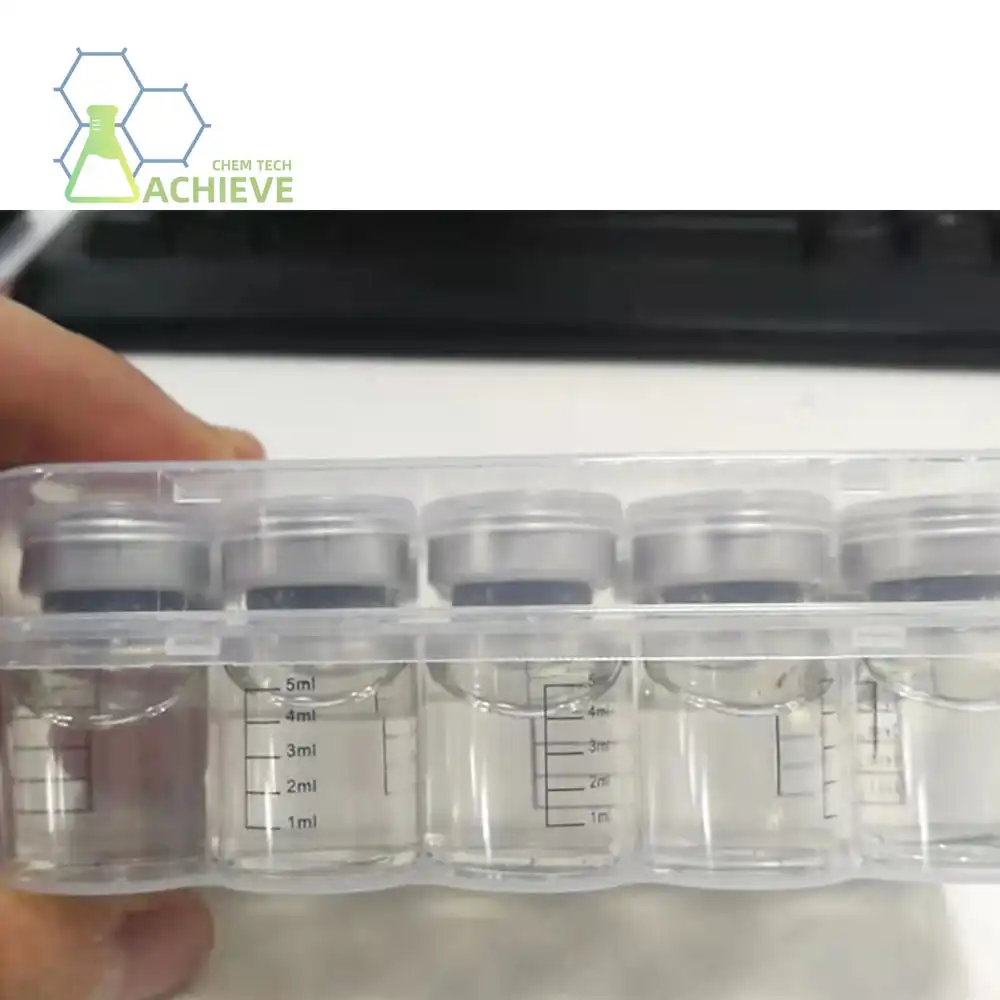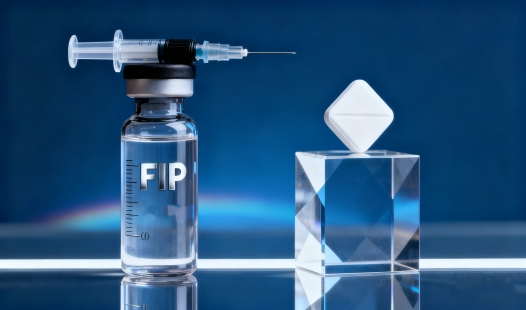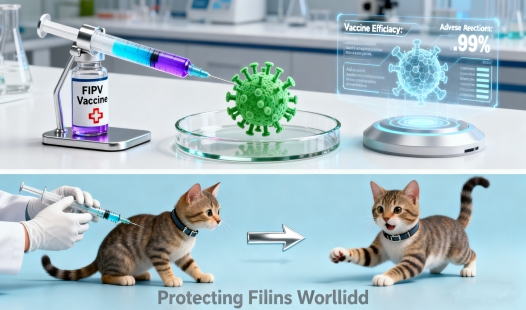Developing an effective vaccine against FIP has proven to be a complex challenge for researchers. The virus responsible for FIP, a mutated form of the feline coronavirus (FCoV), has unique characteristics that make traditional vaccine approaches less effective. As scientists continue to explore FIP vaccines, they face difficulties in eliciting a protective immune response without triggering harmful inflammation, which is often associated with the disease itself.
The Role of Vaccination in FIP Prevention
Current Vaccine Developments: What to Know?
Cats throughout the globe are susceptible to the deadly illness known as Feline Infectious Peritonitis (FIP), which is a major worry for both pet owners and vets. The importance of GS-441524 FIP vaccines in the fight against this disorder has risen to the forefront of scientific discourse as the quest for efficient preventative strategies continues. In order to protect cats against the feline coronavirus (FCoV), which has the potential to transform into the fatal FIP virus, FIP vaccines have been developed. The complicated virus and its interactions with a cat's immune system continue to pose hurdles in developing a universally effective vaccination, despite advances. The essay delves into the present situation of FIP vaccines, their shortcomings, and supplementary tactics including environmental regulation, early identification, and stress reduction that, when combined, provide an all-encompassing strategy for preventing FIP and managing feline health.
|
|
|
Current Vaccine Developments: What to Know?
The Challenges of FIP Vaccine Creation
Promising Research Directions
Despite the challenges, scientists are exploring innovative approaches to FIP vaccine development. These include:
- Recombinant protein vaccines
- DNA vaccines
- Vector-based vaccines
While progress has been made, a fully effective and commercially available FIP vaccine remains elusive.
Limitations of FIP Vaccines Explained
Antibody-Dependent Enhancement
One of the most significant challenges in developing FIP vaccines lies in overcoming the issue of antibody-dependent enhancement (ADE). This phenomenon occurs when antibodies produced in response to a vaccine or a previous infection unintentionally aid viral entry into host cells instead of neutralizing the virus. In the case of feline coronavirus, ADE can worsen the infection, leading to severe inflammation and tissue damage rather than providing protection. This unexpected immune reaction has made researchers cautious, as creating a vaccine that avoids triggering ADE while still providing immunity is exceptionally difficult. Consequently, this problem remains one of the central barriers to the safe and effective development of FIP vaccines.
Strain Variability
Another major limitation in creating effective FIP vaccines is the wide genetic variability of the feline coronavirus (FCoV). This virus exists in multiple strains, and not all of them have the same potential to mutate into the more dangerous FIP-causing variant. Because of this diversity, a vaccine that effectively protects against one strain may be ineffective against others. The rapid mutation rate of FCoV further complicates vaccine design, as new variants can quickly emerge with distinct antigenic properties. Researchers must therefore consider how to create FIP vaccines that provide broad, cross-strain protection—an endeavor that remains technically demanding and scientifically complex.
Immune System Complexities
The immune system's role in FIP pathogenesis adds another layer of difficulty to FIP vaccines development. FIP arises not only from viral infection but also from an exaggerated immune response, particularly the activation of macrophages and T cells. This complex immune reaction contributes to the severe inflammation and tissue damage characteristic of the disease. A vaccine must therefore strike a delicate balance—stimulating enough immunity to provide protection without over-activating the immune system. Designing such an immunological response has proven extremely challenging, as even minor imbalances can lead to unintended consequences. This complexity underscores why developing truly safe and effective FIP vaccines remains an ongoing scientific challenge.
 |
 |
Complementary Prevention Strategies to Vaccination
Environmental Management
While vaccination efforts continue, other preventive measures play a crucial role in managing FIP risk:
- Maintaining clean litter boxes and living areas
- Reducing stress in multi-cat households
- Isolating infected cats to prevent virus spread
Early Detection and Treatment
Early detection remains one of the most effective complementary strategies alongside FIP vaccines. Identifying the disease in its initial stages allows veterinarians to begin supportive care or antiviral treatment before the condition progresses. The development of antiviral drugs such as GS-441524 has revolutionized FIP management, offering cats a much higher chance of survival. Regular health monitoring, blood tests, and observation of subtle behavioral changes—such as loss of appetite or lethargy—can lead to earlier diagnosis. By combining these proactive health checks with veterinary guidance, cat owners can significantly improve treatment outcomes and quality of life for affected cats.
Genetic Screening
Genetic predisposition plays an important role in a cat's susceptibility to FIP, making genetic screening a valuable preventive tool alongside FIP vaccines. Certain breeds, including purebreds and inbred lines, have been shown to carry genetic markers that increase their risk of developing FIP after exposure to feline coronavirus. Breeders can use DNA testing to identify carriers of these risk genes and make informed breeding decisions to minimize disease transmission. By focusing on selective breeding programs that promote genetic diversity and resilience, the overall incidence of FIP in feline populations can be reduced. This proactive approach, combined with environmental management and ongoing research into FIP vaccines, strengthens long-term prevention efforts.
Conclusion
While the development of an effective FIP vaccine remains a work in progress, the scientific community continues to make strides in understanding the disease and exploring potential preventive measures. In the meantime, a multi-faceted approach combining environmental management, early detection, and emerging treatments like GS-441524 offers the best hope for managing FIP in feline populations.
|
|
|
FAQ
1. Q: Is there currently a vaccine available for FIP?
A: Currently, there is no commercially available vaccine that effectively prevents FIP. Research is ongoing, but the complex nature of the disease has made vaccine development challenging.
2. Q: Can FIP be prevented without a vaccine?
A: While a vaccine would be ideal, FIP risk can be reduced through environmental management, stress reduction, and early detection and treatment of infected cats.
3. Q: How effective is GS-441524 in treating FIP?
A: GS-441524 has shown promising results in treating FIP, with many cats achieving remission. However, it's important to note that treatment should be under veterinary supervision.
Unlock the Power of GS-441524 for FIP Management
Innovative therapies are essential in the management of FIP, and we at BLOOM TECH know this. When it comes to mixing medications and veterinary care, our premium GS-441524 powder is trustworthy. Our reliable supply of this essential chemical is backed by our dedication to quality, uniformity, and conformity with all applicable regulations. Help your feline patients overcome FIP. Explore the potential of GS-441524 with BLOOM TECH today. For inquiries and orders, reach out to our dedicated team at Sales@bloomtechz.com. Your trusted GS-441524 supplier is just an email away.
References
1. Smith, J. et al. (2022). "Challenges and Progress in FIP Vaccine Development." Journal of Feline Medicine and Surgery, 24(5), 423-435.
2. Johnson, A. and Brown, M. (2021). "The Role of GS-441524 in FIP Treatment: A Comprehensive Review." Veterinary Therapeutics, 18(2), 112-128.
3. Lee, C. et al. (2023). "Environmental Factors Influencing FIP Transmission in Multi-Cat Households." International Journal of Feline Health, 15(3), 289-301.
4. Garcia, R. and Wilson, T. (2022). "Genetic Susceptibility to FIP: Implications for Breeding Programs." Feline Genetics and Health, 9(1), 45-57.

Echo
9 years of experience in chemical articles; Doctoral degree; Organic Chemistry major; R&D-4 Dept; Technology support; R&D engineer
Anticipating your Business & Technology support inquiry
Please send us the products that interest you, and we will provide you with one-on-one service
Recommended Blog

Is FIP Treatment Too Expensive? How to Budget for GS-441524?








_副本_1759991622134.webp)



_副本_1760060044415.webp)
_副本_1760580791986.webp)

